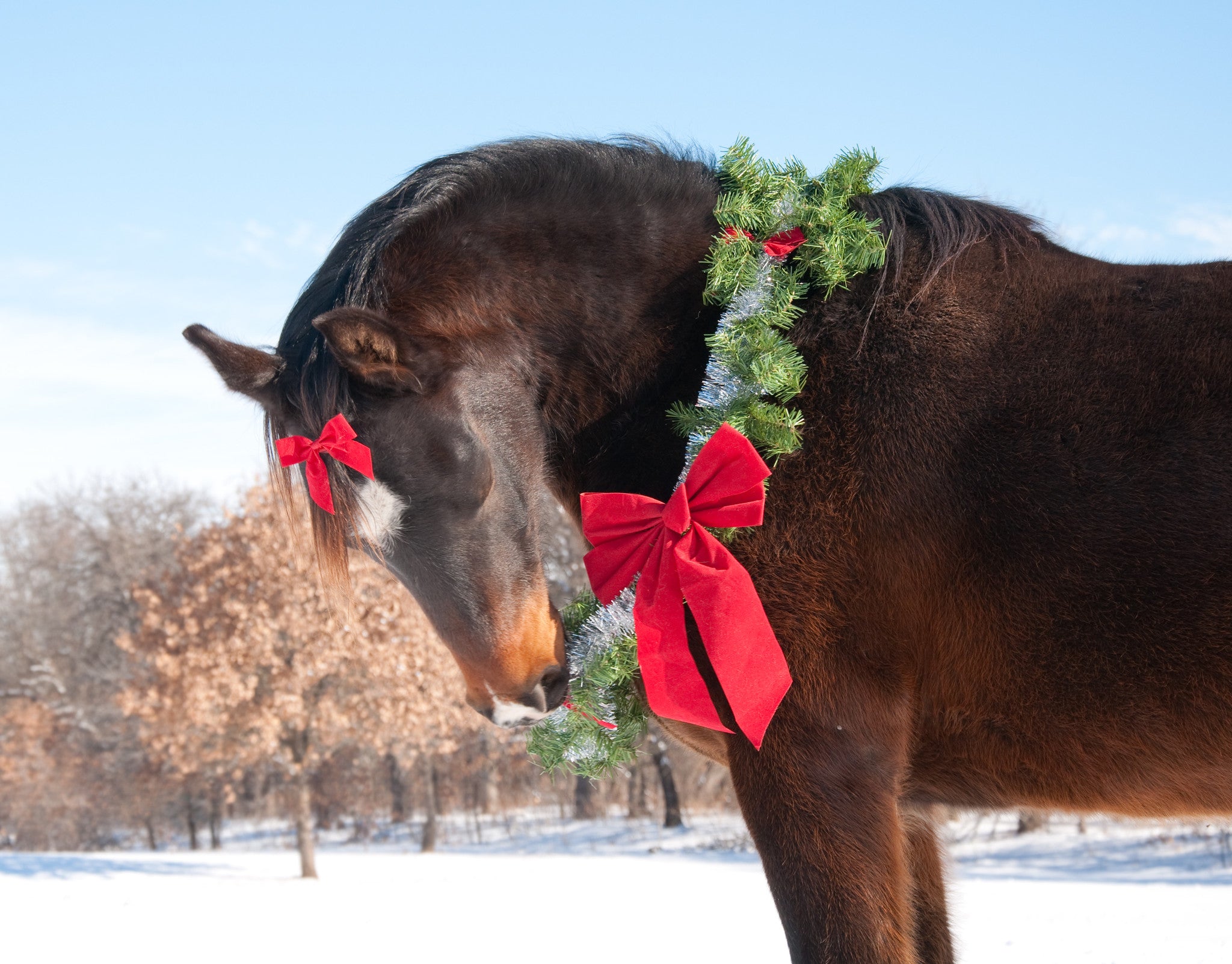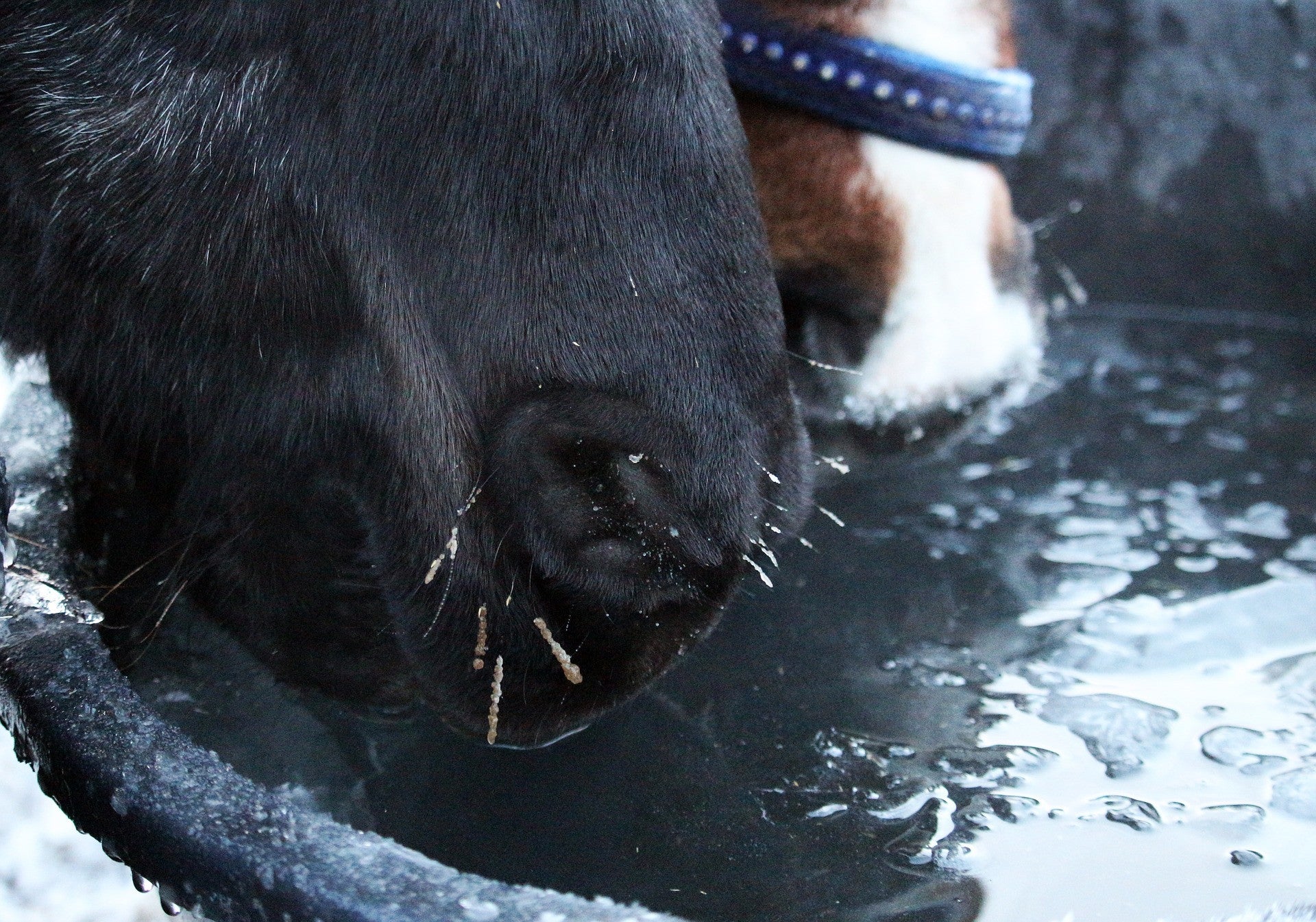If you’re a barn or stable owner that sees the hard frozen temperatures in winter and dreads the inevitable spring thaw, now is a great time to consider ways to manage your soil and footing options. Barnyard mud quickly turns into a hazard as temperatures drop, but it also presents itself as even more of a problem come spring. Knowing how to manage the melt as the frozen ground and any leftover snow trickle off when the temps heat up can be a daunting task.
You may be in an area of the country that hasn’t yet gotten cold enough to have frozen the ground solid. If your drainage issues in the warmer months have left you with unstable soil and deep mud, as a property owner you’ll start to see the dangers of frozen soil in your paddocks. You’ll most likely end up with sharp frozen peaks and dangerous low valleys, hard enough to trip your animals and cause leg, hoof and frog injuries. Not to mention loss of feed and hay as temperatures rise just enough to turn the surface of the frozen soil malleable. As your horses nibble on their meal, they’re bound to drop some, stepping on it and mashing it into the ground.
How Long Does it Take for the Ground to Freeze?
Generally, it takes several months of persistent cold weather before the ground will freeze to a deeper level. If you wake up with frost on the lawn, the top layer of soil is already frozen.
When Does the Ground Freeze?
At 32 degrees Fahrenheit, the ground will begin to freeze solid. At this point, it doesn’t matter how much precipitation is on the ground, digging into your footing or ground will be difficult.
If mud management has been an issue prior to the ground freezing, you’ll find you’re in for a bit of an uphill battle until your property dries out in spring and you can install Lighthoof panels or enact a soil erosion prevention plan. The best option you’ve got once the ground is frozen is to keep the surface as clean as possible, mucking frequently and dragging if your ground is frozen and temperatures are still low. If you have a low area in your paddock or barnyard that water and runoff tend to travel towards, you’ll want to ensure that the lowest point isn’t somewhere that sees high traffic. Diverting water flow and snow melt so it doesn’t pool in an area everyone needs to be standing will be one of your best moves! If you’re concerned that your winter precipitation runoff is going to take away valuable soil and footing as it flows away from your pens, utilizing tools like rock socks and in some cases, sand bags might be a good resource for you. Typically, sand bags will keep all your mucky, soupy water in your paddock, as it does not allow the same amount of water through as a rock sock will. Strategically placed bags and socks however, can be a great tool to help you redirect water flow and keep too much of your soil from washing away. If you’re in a real bind, laying down appropriate sized gravel across gateways or in serious problem spots can serve as a temporary solution until you can install something a bit more permanent. Just remember, gravel or other footing material laid down without a ground stabilizing structure will merely sink into the soil after a period of time.
If there are barns, sheds, stables or any other buildings located in your paddocks or problem areas, sometimes managing your mud and drainage should include installing gutters and downspouts. Make sure your gutters are debris free, and that your downspouts lead far enough away from your buildings that they aren’t pooling at the foundation with nowhere to go.
Hopefully your property won’t see so much snow and winter precipitation that you’re left with a mess you can’t handle. But if you have a perpetual spring run-off issue every year, making sure your melted snow has somewhere to go without taking your paddock footing with it is the first step in mud management.
Next step: Install our innovative mud management panels and never have to deal with the spring thaw muck again! Lighthoof panels are uniquely flexible which makes them ideal for climates with hard freezes and thaws. Unlike many other mud control solutions, Lighthoof panels have the ability to flex completely with the expansion and contraction of the ground. This prevents problems with cracking, heaving, or shifting of the surface that can occur in ground freezing conditions.




Leave a comment
This site is protected by hCaptcha and the hCaptcha Privacy Policy and Terms of Service apply.